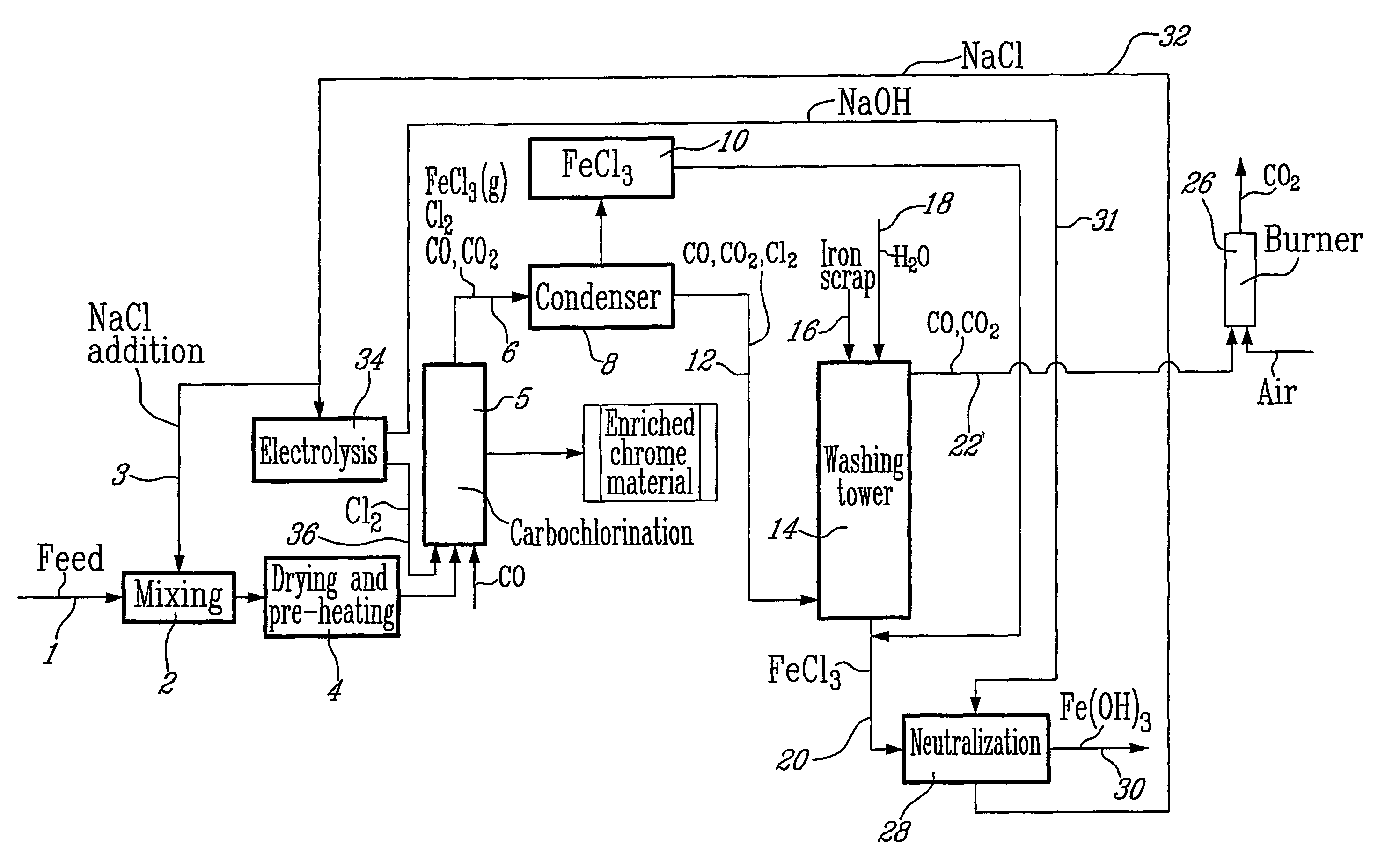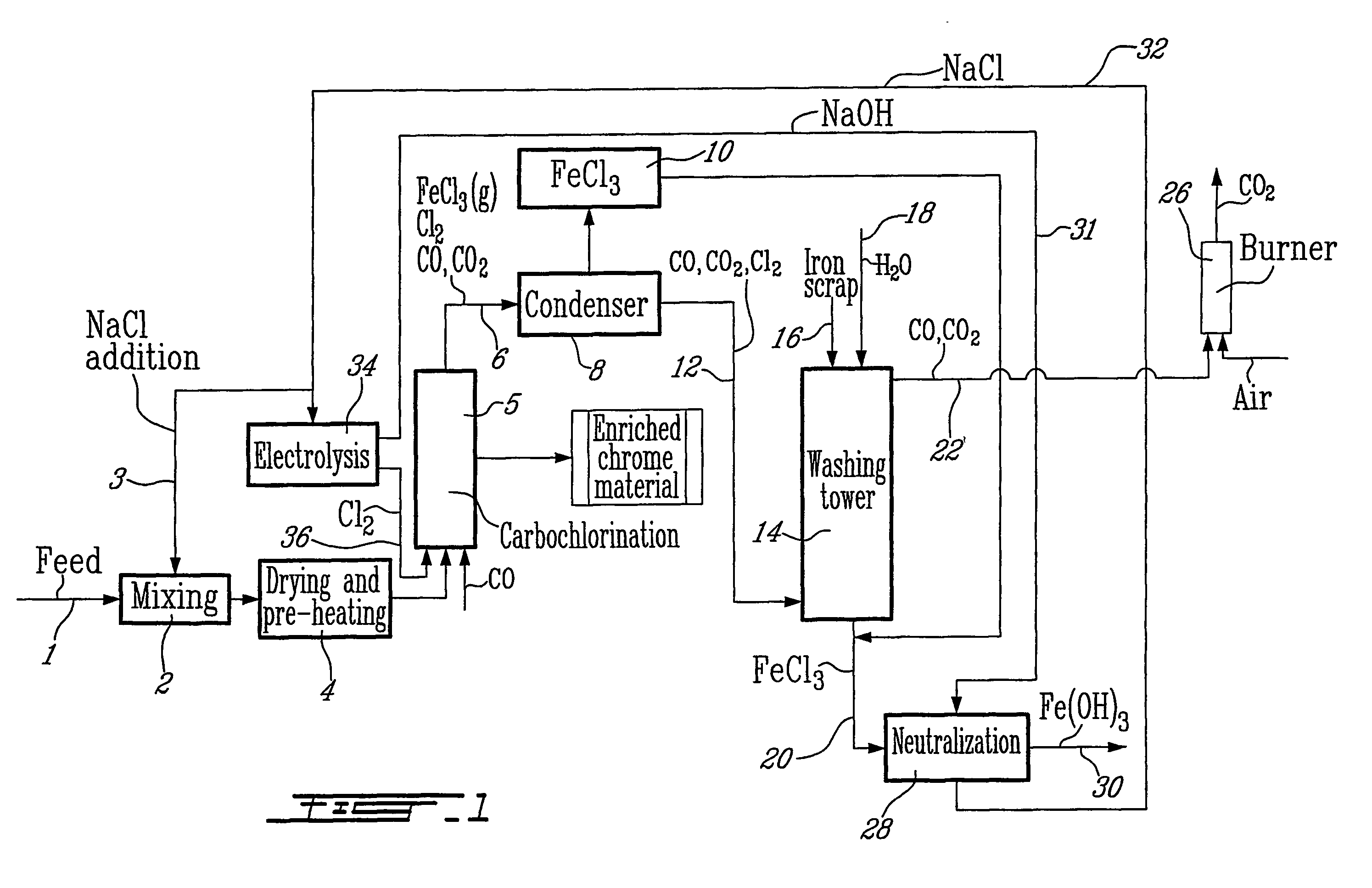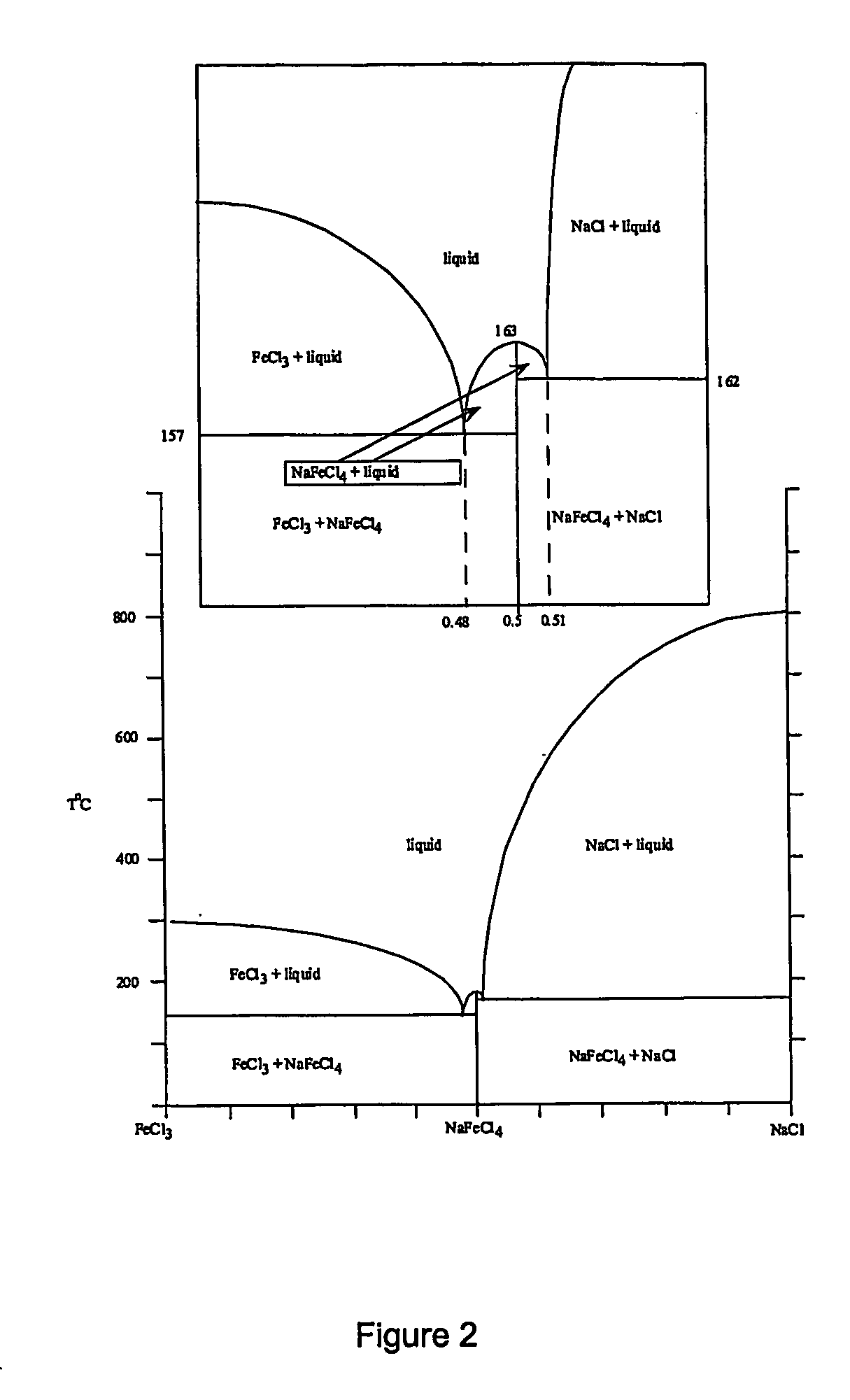Method for increasing the chrome to iron ratio of chromites products
- Summary
- Abstract
- Description
- Claims
- Application Information
AI Technical Summary
Benefits of technology
Problems solved by technology
Method used
Image
Examples
example 1
Selectivity of the Carbochlorination for the Removal of Iron Versus Chromium
[0065] This example comprises a set of 4 experiments. The results are presented in Table 2. This Example demonstrates the selectivity of the iron removal by carbochlorination versus chromium according to the method of the present invention. The other major elements are reported in Table 2 for indicative purposes only. The range of temperature tested varied from 250 to 550° C. The chlorinated sample were mixed with a NaCl brine and dried at 180° C. for 30 minutes. The salt content of the chlorinated samples was 5% (w / w). A 10 g sample of chromite ore was placed in a 10 ml porcelain beaker. The beaker was positioned in the center of 60 cm in length silica tube, with an internal diameter of 6 cm. The assembly beaker-silica tube was placed in the furnace and the temperature was raised at the chosen carbochlorination temperature. When the temperature was reached and stable, a Cl2, CO gas mixture was introduced i...
example 2
Identification of the Condensate as FeCl3
[0067] The red brown condensate formed on the inside wall of the silica tube (in experiment described in Example 1) was washed out from the tube with water, in which this compound dissolved readily. This solution was analyzed by ICP-AES for major elements and by UV spectroscopy for the oxidation state of iron. Analyzis of the solution established the presence of iron as the only major element. Other elements were present at the trace level. Iron oxidation state was determined as Fe+3 by UV. These observations further demonstrated that iron was removed as gaseous FeCl3 during the carbochlorination of the chromite ore.
example 3
Effect of the Salt Addition on the Selective Removal of Iron Versus Chromium
[0068] The effect of the NaCl salt addition on the carbochlorination was tested by adding incremental quantity of NaCl to samples T-2-1 to T-2-5. The experimental conditions for these five samples are summarized in Table 3. Carbochlorination temperature was set at 600° C., the reaction time at 2 hours, and the quantity of NaCl salt addition varied from 0 to 15.0% (w / w). Results presented in Table 3 show a direct increase in the chrome to iron ratio in relation with the quantity of salt added to the feed. In sample T-2-1, with no salt addition, the chrome to iron ratio reached a value of 3.16 after the chlorination step, an increase of 1.75 compared to the original ore. In sample T-2-5 to which was added 15% NaCl (w / w), the chrome to iron ratio was 4.52 at the end of the chlorination experiment. This corresponds to a 47% increase in the Cr / Fe when compared to sample T-2-1. This strong Increase of the carboch...
PUM
| Property | Measurement | Unit |
|---|---|---|
| Temperature | aaaaa | aaaaa |
| Temperature | aaaaa | aaaaa |
| Fraction | aaaaa | aaaaa |
Abstract
Description
Claims
Application Information
 Login to View More
Login to View More - R&D
- Intellectual Property
- Life Sciences
- Materials
- Tech Scout
- Unparalleled Data Quality
- Higher Quality Content
- 60% Fewer Hallucinations
Browse by: Latest US Patents, China's latest patents, Technical Efficacy Thesaurus, Application Domain, Technology Topic, Popular Technical Reports.
© 2025 PatSnap. All rights reserved.Legal|Privacy policy|Modern Slavery Act Transparency Statement|Sitemap|About US| Contact US: help@patsnap.com



